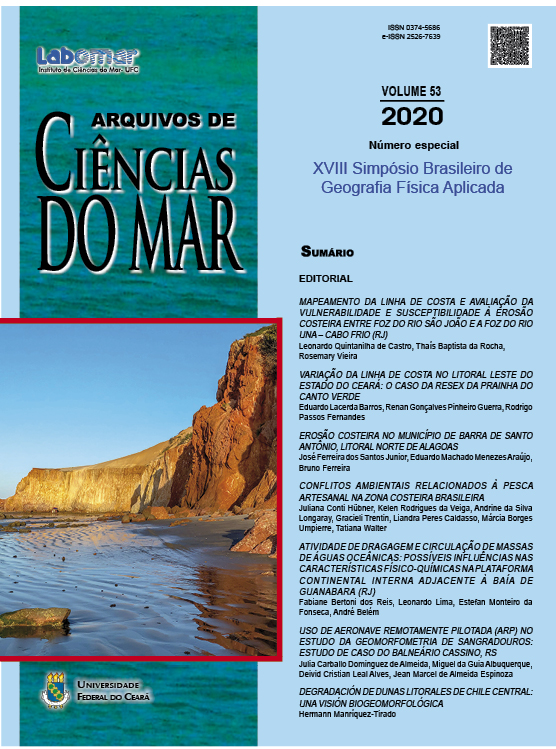Fluviomarine processes associated with the genesis of Rasa island, south of Marapatá Bay, northeastern Pará, Brazil
DOI:
https://doi.org/10.32360/acmar.v53iEspecial.42659Abstract
The islands take on significant prominence in the estuarine landscape of Pará State, although most of them present unclearly defined genesis. In order to investigate the formation factors of Rasa Island, located at the mouth of Tocantins, estuary of the Pará River, the present work is based on sedimentary features, identified in the sediment core taken by a Russian Sampler from a fluviomarine plain. In this study, the faciologic analysis and interpretation of sedimentary environments, in association with climatic events reported to the region, supported the proposition of a morphogenetic model. The model proposed here suggests that Rasa Island has late Holocene age and consisted of sandy bars that evolved under the effect of fluvial processes, inherent to the drainage basin, and coast processes articulated to sea-level changes and climate changes. These processes affected the sediment supply and distribution of vegetation cover, influencing the estuarine sector and contributing to the formation of proximal islands.
Keywords: sandy bars; estuary; relative sea level; sedimentary environment; Tocantins river.
Downloads
Downloads
Published
How to Cite
Issue
Section
License
1. Proposta de Política para Periódicos de Acesso Livre
Autores que publicam nesta revista concordam com os seguintes termos:
- Autores mantém os direitos autorais e concedem à revista o direito de primeira publicação, com o trabalho simultaneamente licenciado sob a Licença Creative Commons Attribution que permite o compartilhamento do trabalho com reconhecimento da autoria e publicação inicial nesta revista.
- Autores têm autorização para assumir contratos adicionais separadamente, para distribuição não-exclusiva da versão do trabalho publicada nesta revista (ex.: publicar em repositório institucional ou como capítulo de livro), com reconhecimento de autoria e publicação inicial nesta revista.
- Autores têm permissão e são estimulados a publicar e distribuir seu trabalho online (ex.: em repositórios institucionais ou na sua página pessoal) a qualquer ponto antes ou durante o processo editorial, já que isso pode gerar alterações produtivas, bem como aumentar o impacto e a citação do trabalho publicado (Veja O Efeito do Acesso Livre).

